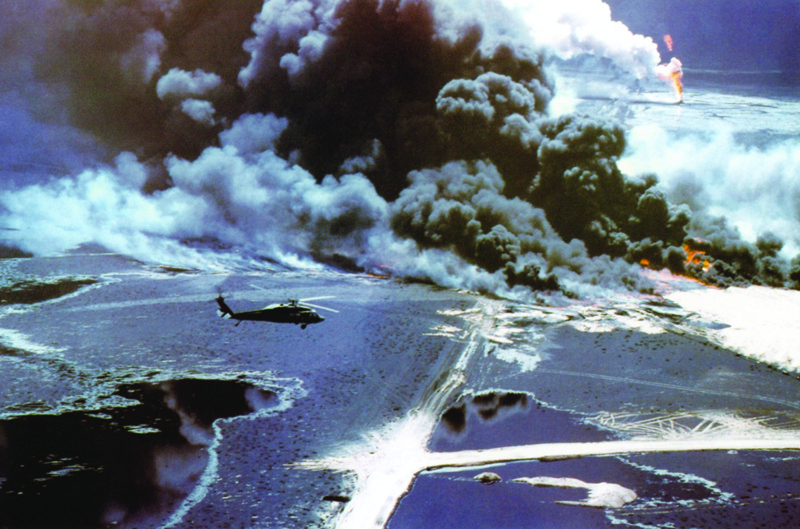KUWAIT: Although enormous efforts have been exerted to rehabilitate Kuwait's environment since the flagrant Iraqi invasion in 1990, scars of the destruction remain visible. The aggressors carried out a scorched earth policy, inflicting heavy damage on the land and marine environments and polluting the air. They blew up and set afire oil wells, causing huge amounts of the crude to contaminate the ground and the sea waters, reaching deep water reservoirs.
The environmental catastrophe in Kuwait, caused by the Iraqi aggression, was one of the worst calamities ever witnessed by peoples of the world, Minister of Oil and Minister Higher Education Mohammad Al-Fares said yesterday. The aggressors set afire more than 700 oil wells causing widespread contamination of the sand. Minister Fares recalled that due to the crude oil leakage, up to 300 oil lakes containing some 22 million barrels of oil were formed. Since then, Kuwaiti authorities have embarked on a huge task; restoring the large swaths of land and sand dunes contaminated with oil.
Restoration by 2024
"We are doing our best to finish restoration of the damaged areas by the end of 2024," Minister Fares explained, noting that the timetable had been set by the United Nations. Two dumping sites for the waste have already been built. One is located in North Kuwait - of a 1,700 cubic meter capacity - and the other in southern Burgan field - of a 580,000 cubic meter capacity. So far, 2.28 million cubic meters of contaminated soil, out of the total 26 million cubic meters, have been cleansed of the oil residues.
Minister Fares affirmed that pollution in the coastal regions had already been tackled, in addition to cleansing and filling craters that had been dug as part of the efforts to put out the flames at the burning oil wells, adding that these spots were restored after removing ordnance and materials that may blow up. Kuwait Oil Company, tasked with reclaiming the sand, had inked five major deals to remedy the contamination sand in line with Kuwait Environmental Remediation Program, he said, indicating that related projects were designed to treat some 1.3 million cubic meters of soil in the north and south.
Fifty percent of the fund earmarked by the United Nations will be spent on these projects, he said, alluding to half of $3 billion worth of the UN environmental reparation fund, declared post the 1991 liberation of the State of Kuwait. The summer of 2022 will witness launch of complementary reparation projects, he disclosed, affirming that more amounts of the contaminated soil would be remediated.
Elaborating, Fares said Kuwait Oil Company has carried out major projects to minimize gas emissions at its installations. Moreover, it has managed industrial waste according to terms of the Environment Public Authority, in addition to establishing natural reserves. Fares affirmed that concern for peoples' health, safety, security and the environment constitute priorities as part of the strategy of the Kuwait Petroleum Corporation (until 2040).
Emerging pollutants
Meanwhile, Acting Director General of Kuwait Institute for Scientific Research Dr Manea Al-Sudairawi said that KISR drew up a program post the liberation to tackle emerging pollutants. Immediately after the 1991 liberation, the institute launched the first project to assess environmental damage resulting from the aggression, Dr Sudairawi said, indicating that the institute teams surveyed the land to assess the damage. Re-shedding light on the invasion related damage, he affirmed that enriched uranium was used in some weapons, thus affecting citizens' health and killing some plants, in addition to deterioration of the marine life.
Dr Mohammad Al-Saraawi, EPA's former director general, said in the meantime that the scars of the aggression would remain visible in the short and long terms, affirming that large swaths of the land remained soaked with 20 million square meters of leaked crude oil. Other threats to the Kuwaiti environment are neglected mines, accumulation of sludge in northern marine locations, particularly around the islands, due to break-up of the soil in southern Iraqi regions. - KUNA



